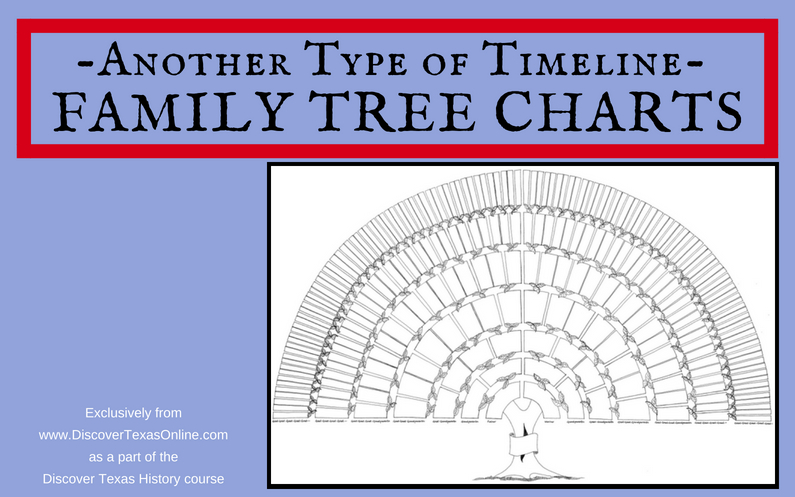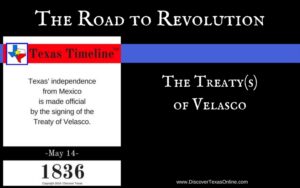
Wrapping up our discussion of timelines, let me point out that a Family Tree Chart like this one included in the Discover Texas History course is essentially just another type of timeline–one that shows the complexity of generations through time. In any family line, the years between generations will almost certainly vary (In our family it’s common to have a first child around 30, but I had a friend whose grandmother was only 32!), but even that distinction can become the basis of some good stories and conversations.
Family tree charts help children see not only family relationships, but the way events in time are related, as well.
A small child has no concept of how long ago the Vietnam War, the Great Depression, the World Wars, or the Westward Expansion happened. In a child’s mind, these historical events all happened at the same time–“before me.” A family tree chart gives them a scale of “how long before me” an event occurred.
A family tree chart can serve as a touchstone–a repository of family stories–that helps children see that heroes are just people.
No one wakes up and decides to be a hero on any given day. Heroes are just average people who were living their everyday lives when they came to a point of decision. They had to choose whether to do the easy thing or the right thing, whether to take a stand or to run away, whether to save themselves or to save others. Every family has its heroes (and likely its scoundrels, too). When children connect with their heritage, they develop a sense of identity and tradition that’s healthy and good.
I love using family tree charts as a way of making history personal.
Think about this: My great-grandfather on one side fought for the Union in the Civil War. My great-great-grandfather on the other side fought for the Confederacy. What if they had met in battle and one had killed the other? Even when they were young, our children could understand that an entire segment of our family tree would have been lost or changed. They would not have been here. Suddenly, they wanted to know more about this war where people from the same country fought each other. They also got a very vivid impression of the tragic and far-reaching impact of violence.
Which brings us to another point…family tree charts help children see that just like every country and every state has a history, every family and every person has a history, too. Some people would say it’s all fate, but my personal belief is that God is sovereign and takes great care in establishing the days of each of our lives.
All of these factors inspire us to live deliberately–to take thought for our choices and the possible consequences of those choices–and that’s a good thing for any young person to consider.



